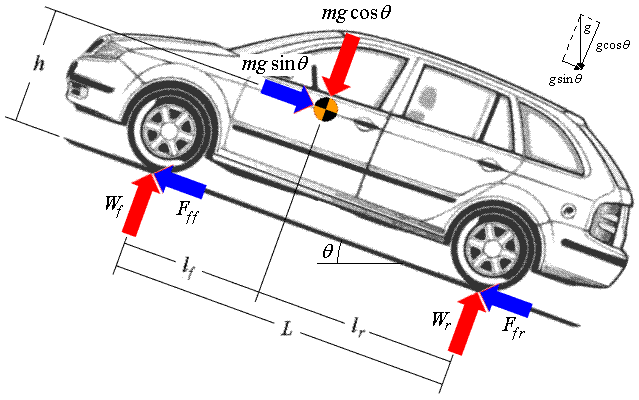When a vehicle goes up a hill, the gravitational acceleration (g) stays vertical. Because it is a vector, this acceleration will be splitted into two smaller components: One that will push the vehicle down against the road (gcosθ) and another that will simulate an acceleration (gsinθ). We can find those components with trigonometry.
Note that we will also assume that the vehicle is at rest, trying to «hold on» with engine power, so we will neglect aerodynamic effects and rolling resistance.

The maximum slope that can climb a vehicle based on its maximum tractive capabilities is:
For an AWD: (more)
*Since most vehicle have 4-wheel brake systems, this is also the maximum slope that your brake system will be able to support before the vehicle starts sliding down.
For a RWD: (more)
For a FWD: (more)
Flip over limit
Regardless of the automobile layout, there is a slope where the vehicle will flip over, i.e. the normal load on the front axle will be zero. The flip over limit is: (more)
Where:
